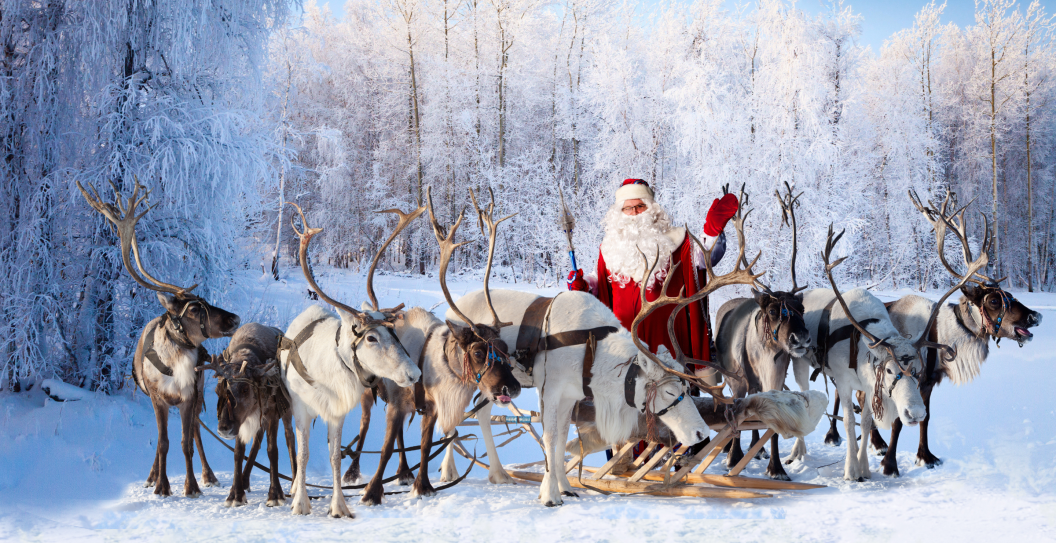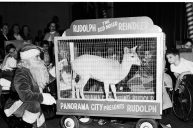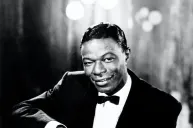We know the lineup of Santa's reindeer more or less by heart: Dasher, Dancer, Prancer, Vixen, Comet, Cupid, Donder, Blitzen and, of course, Rudolph the Red-Nosed Reindeer. But have you ever wondered who initially gave these legendary animals their names? Santa's reindeer play a prominent role in every classic Christmas movie centered around Santa Claus, but there's an interesting history behind his team of holiday helpers.
Videos by Wide Open Country
While we'd love to believe Santa himself named his reindeer, the sleigh-pulling team as we know it — and the concept of Santa's sleigh in general — was actually popularized by Clement Clarke Moore's 1823 poem "A Visit from St. Nicholas" (more commonly known as "The Night Before Christmas").
More rapid than eagles his coursers they came,
And he whistled, and shouted, and call'd them by name:
"Now! Dasher, now! Dancer, now! Prancer, and Vixen,
"On! Comet, on! Cupid, on! Dunder and Blixem;
"To the top of the porch! to the top of the wall!
"Now dash away! dash away! dash away all!"
You might have noticed some differences in the original text from the reindeer you know today. For instance, the last two reindeer are called Dunder and Blixem, which means "thunder and lightning" in Dutch. A few decades later, in an 1860s version of the poem, they were renamed Donder (also spelled Donner) and Blitzen. Rudolph wouldn't be added to the team until 1939, when he was created by Robert L. May for a coloring book to sell at Montgomery Ward department stores.
Over the years, Santa's reindeer have solidified themselves in holiday traditions and lore. So much so that a lot of people are surprised to learn that reindeer are, in fact, real. If you're curious about both the real-life and fictional origins of Santa's famous sleigh-pullers, here are a few other little-known facts about reindeer that might surprise you.
They're Technically Caribou
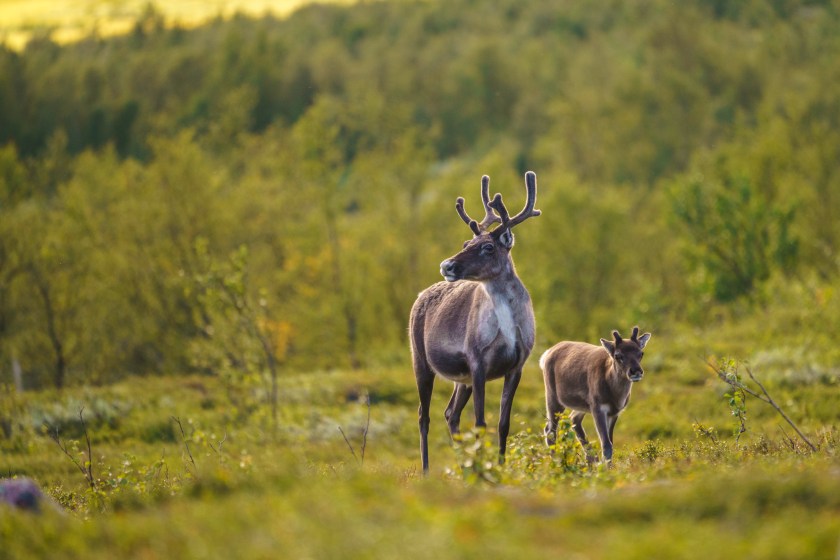
You've probably heard about reindeer in the wild before, just not in the context of Santa's sleigh team. Reindeer and caribou are actually the same species, but they have different names depending on how domesticated they are.
The so-called "wild" reindeer that roam around the cold climates of Siberia are referred to as caribou, while the reindeer that pull sleds and are raised as livestock in Scandinavia are referred to as reindeer. While they absolutely cannot fly, they can run. Some caribou can reach up to 48 mph — giving Santa's sleigh a real run for its money.
Santa Started With Just One Reindeer
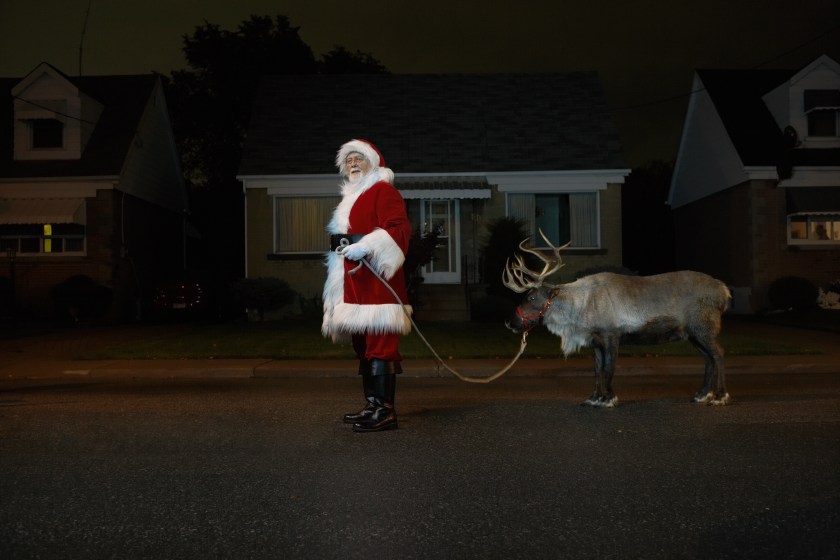
While "A Visit from St. Nicholas" may have put Santa's reindeer on the map, it wasn't the first time the animals were named as his official sleigh-pullers. The first-ever recorded reference was an 1821 children's poem that had an accompanying illustration showing Santa's sleigh being pulled by a single, unnamed reindeer.
Decades after the world became familiar with Santa's reindeer team, "Wizard of Oz" author L. Frank Baum attempted to add two more players to the mix and change up all their names. In his 1902 story, "The Life and Adventures of Santa Claus," Santa's reindeer are Flossie, Glossie, Racer, Pacer, Reckless, Speckless, Fearless, Peerless, Ready and Steady.
Despite the dedication to rhyming, those names never quite stuck.
Santa's Reindeer Are Likely All Female
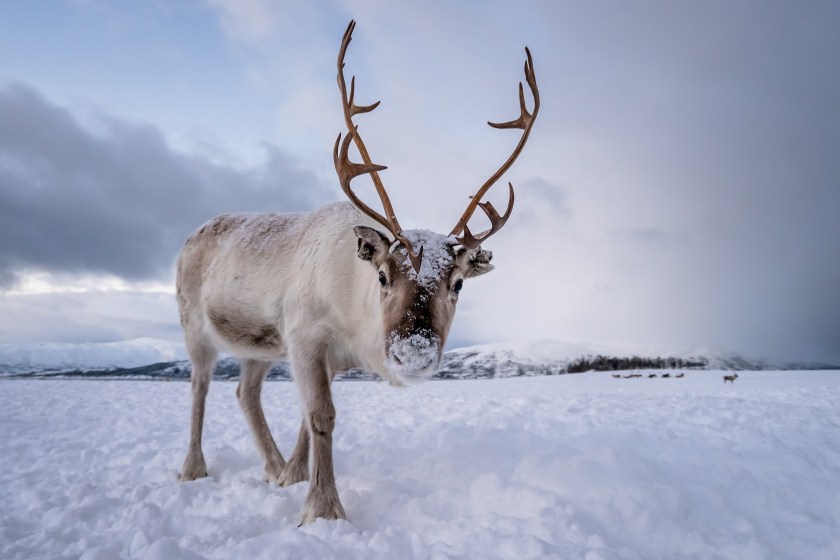
As it turns out, Santa Claus may have a more progressive hiring strategy than we realized. Male reindeer shed their antlers in early December to prep for mating season. So, if we're to believe all the illustrations, stories and supposed sightings that depict Santa's reindeer as having antlers, those reindeer would likely be female.
And really, female reindeer would make much better sleigh-pullers than males. Males lose a lot of body fat during winter, while females tend to carry more. This creates a natural insulator, helping them stay warm and conserve energy while pulling Santa's heavy sleigh full of toys and gifts.
Rudolph's Red Nose Isn't a Myth
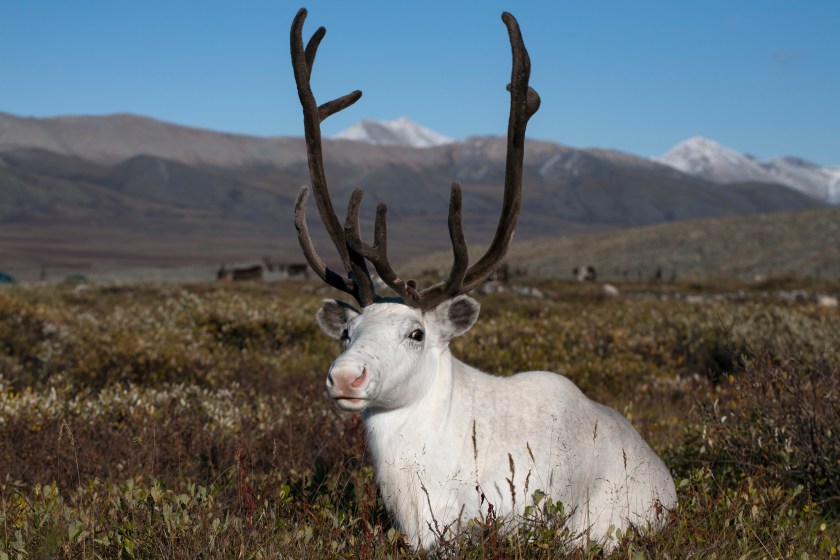
Credit: Getty
In the story of Rudolph, his glowing red nose is viewed as a potential hazard or sign of something wrong. But, in reality, Rudolph's nose is actually a survival mechanism.
A 2012 study found that reindeer in Arctic regions such as Alaska, Canada, Greenland, Russia and Scandinavia have an increased amount of blood vessels in their noses to help regulate body temperature in extremely cold temperatures. When they're running and working hard — such as, maybe, pulling a massive sleigh filled with toys for the entire world — these vessels help regulate their body temperature and supply blood throughout their bodies.
"These results highlight the intrinsic physiological properties of Rudolph's legendary luminous red nose," writes one of the study's authors. "[The blood vessels] help to protect it from freezing during sleigh rides and to regulate the temperature of the reindeer's brain, factors essential for flying reindeer pulling Santa Claus's sleigh under extreme temperatures."
Not all reindeer share this trait, which is why Rudolph's nose makes him special. And before you ask, his nose probably doesn't light up like a bulb. In most cases, the vessels are more visible in cold weather and can give off a slight red appearance.
